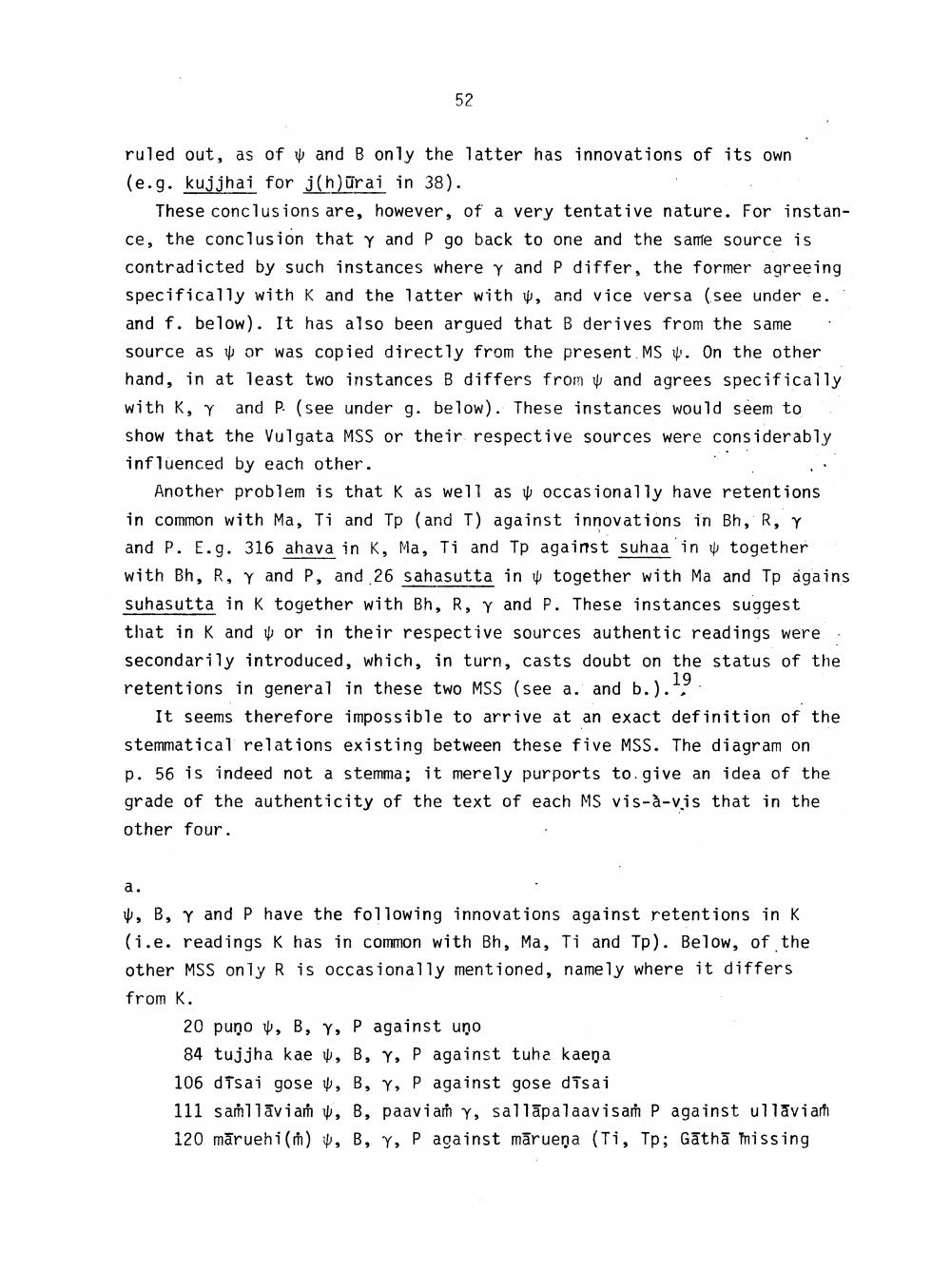________________
52
ruled out, as of W and B only the latter has innovations of its own (e.g. kujjhai for j(n)ūrai in 38).
These conclusions are, however, of a very tentative nature. For instance, the conclusion that y and P go back to one and the same source is contradicted by such instances where y and P differ, the former agreeing specifically with K and the latter with y, and vice versa (see under e. and f. below). It has also been argued that B derives from the same source as v or was copied directly from the present. MS W. On the other hand, in at least two instances B differs from w and agrees specifically with K, Y and P (see under g. below). These instances would seem to show that the Vulgata MSS or their respective sources were considerably influenced by each other.
Another problem is that K as well as v occasionally have retentions in common with Ma, Ti and Tp (and T) against innovations in Bh, R, Y and P. E.g. 316 ahava in K, Ma, Ti and Tp against suhaa in v together with Bh, R, Y and P, and 26 sahasutta in v together with Ma and Tp agains suhasutta in k together with Bh, R, Y and P. These instances suggest that in K and u or in their respective sources authentic readings were. secondarily introduced, which, in turn, casts doubt on the status of the retentions in general in these two MSS (see a. and b.).
It seems therefore impossible to arrive at an exact definition of the stemmatical relations existing between these five MSS. The diagram on p. 56 is indeed not a stemma; it merely purports to give an idea of the grade of the authenticity of the text of each MS vis-à-vis that in the other four.
a.
U, B, Y and p have the following innovations against retentions in K (i.e. readings K has in common with Bh, Ma, Ti and Tp). Below, of the other MSS only R is occasionally mentioned, namely where it differs from K.
20 puņot, B, Y, P against uņo 84 tujjha kae , B, Y, P against tuha kaeņa 106 dTsai gose v, B, Y, P against gose disai 111 saṁllāvia y, B, paavia y, sallāpalaavisam P against ullavia 120 māruehi(), B, Y, P against mārueņa (Ti, Tp; Gāthā missing




